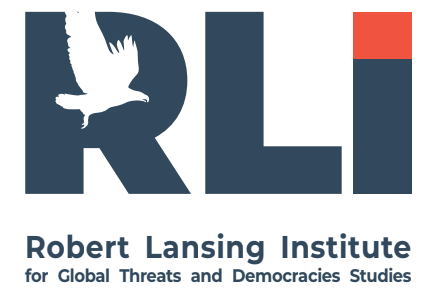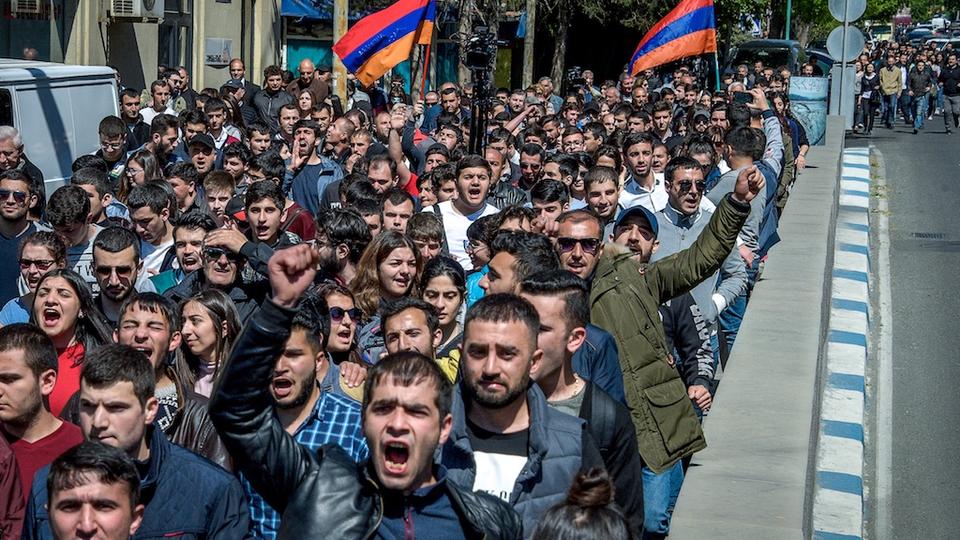Strategic Context: The Collapse of the Russian Security Umbrella
Armenia’s decision to build a dedicated foreign counterintelligence (CI) capability reflects a radical shift in Yerevan’s security doctrine.
Three structural changes underpin the move:
- Russia’s security guarantees have collapsed (failure to defend Armenia during 2021–2023 border crises, and during the 2023 Nagorno-Karabakh collapse).
- Russian intelligence networks inside Armenia remain extremely dense, built since the 1990s through the FSB, GRU, SVR and Russian “peacekeeper” structures.
- Yerevan is turning toward the West, seeking security diversification (EU mission, France’s defense partnership, intensified U.S. engagement).
This combination creates a national-security vacuum: Armenia cannot pivot to a new security architecture while its intelligence system remains deeply penetrated and externally controlled.
Hence: a new foreign counterintelligence body is designed to cut the umbilical cord with Russian intelligence dominance.
Armenia’s security services—NSS (National Security Service)—are traditionally infiltrated by Russian advisors, alumni of Russian academies, and senior officers who maintain loyalty to Moscow.
The new CI structure aims to:
- Identify and neutralize Russian intelligence assets in the military, politics, clergy, media, and business.
- Prevent coup-related intelligence operations similar to the February 2025 attempted coup.
- Reassert sovereign control over Armenia’s strategic decision-making.
Building a Western-Compatible Security Architecture
Yerevan is trying to align itself with European intelligence standards. For that it needs:
- A separate unit that the West can trust with intelligence sharing.
- A body that does not share archives, personnel, or internal culture with the Russian-influenced NSS.
- A platform to integrate with:
- French DGSI/DGSE,
- U.S. CIA/FBI counterintelligence outreach,
- EU security missions.
Monitoring Foreign Influence Operations
A dedicated CI service will surveil:
- Russian political influence networks (media, clergy, oligarchs, parties like ARF Dashnaktsutyun, Revanchist groups).
- Iranian networks (IRGC affiliates, clerical institutions, border operatives).
- Azerbaijani HUMINT structures operating via NGOs and commercial channels.
- Turkish intelligence expansion (MIT cultivating diaspora networks and “soft power” fronts).
Protecting Critical Infrastructure
Targets include:
- Energy corridors, gas pipelines,
- Telecom networks,
- Defense procurement chains,
- Government IT systems.
Under Russian oversight, these were vulnerable to sabotage or foreign monitoring.
Key Reasons Behind the Decision
Russia’s coup-related behavior in Armenia
The 2025 coup attempt exposed how deeply Russian services can mobilize internal actors (ex-military, clerics, oligarchs, revanchist parties).
Pashinyan needs to create institutional insulation from future Russian attempts.
Russia’s open hostility to Yerevan’s Western pivot
Moscow now treats Armenia as a “strategic deserter.”
Russia has increased:
- information warfare against Pashinyan,
- support to radical opposition groups,
- economic pressure,
- covert operations designed to destabilize the government.
A counterintelligence service is a shield against this shift.
3. Domestic political survival
Without counterintelligence reform:
- any pivot to Europe could trigger another coup attempt,
- the NSS might refuse to act against Russian proxies,
- foreign intelligence cooperation with the West will be impossible.
Pashinyan’s government understands this clearly.
Creation of a new, untainted security elite
A new CI body allows Armenia to:
- recruit Western-trained specialists,
- purge pro-Russian networks without openly provoking Moscow,
- build an intelligence culture that looks toward Paris, Brussels, and Washington, not Moscow.
A. Russia-Armenia relations: Rapid Deterioration
Expect:
- Russian retaliatory actions (economic, information, and destabilization operations),
- dismissal of Armenian officials from CSTO/EEU structures,
- intensification of Russian pressure on Armenian diaspora communities.
Moscow will interpret the new CI body as a hostile geopolitical turn.
Strengthening of Armenia–France and Armenia–US ties
This move is a strong signal to:
- France, which positions itself as Armenia’s security guarantor.
- The United States, which sees Armenia as a testing ground for breaking Russia’s intelligence hegemony in the South Caucasus.
CI reform will open channels for:
- classified intelligence exchange,
- training programs,
- equipment and cyber-security assistance.
Domestic political turbulence
Reforming intelligence services is politically dangerous:
- Russian-aligned groups will accuse Pashinyan of “betraying Armenia.”
- Old NSS cadres may sabotage reforms.
- Clerical and revanchist organizations may mobilize protests.
This reform could trigger a second wave of destabilization attempts.
D. Regional geopolitical consequences
- Azerbaijan and Turkey will watch closely:
- A stronger Western-aligned CI service weakens their ability to exploit Armenia’s internal vulnerabilities.
- Iran will be concerned:
- Armenian counterintelligence could begin monitoring IRGC-linked structures and cross-border influence operations.
- Georgia may quietly support Armenia:
- Tbilisi also wants to reduce Russian intelligence penetration and sees Armenia’s shift as strategically positive.
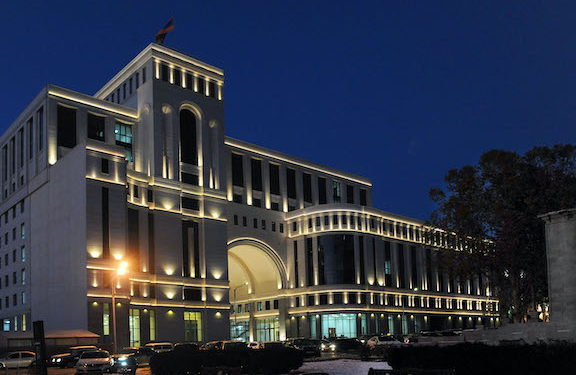
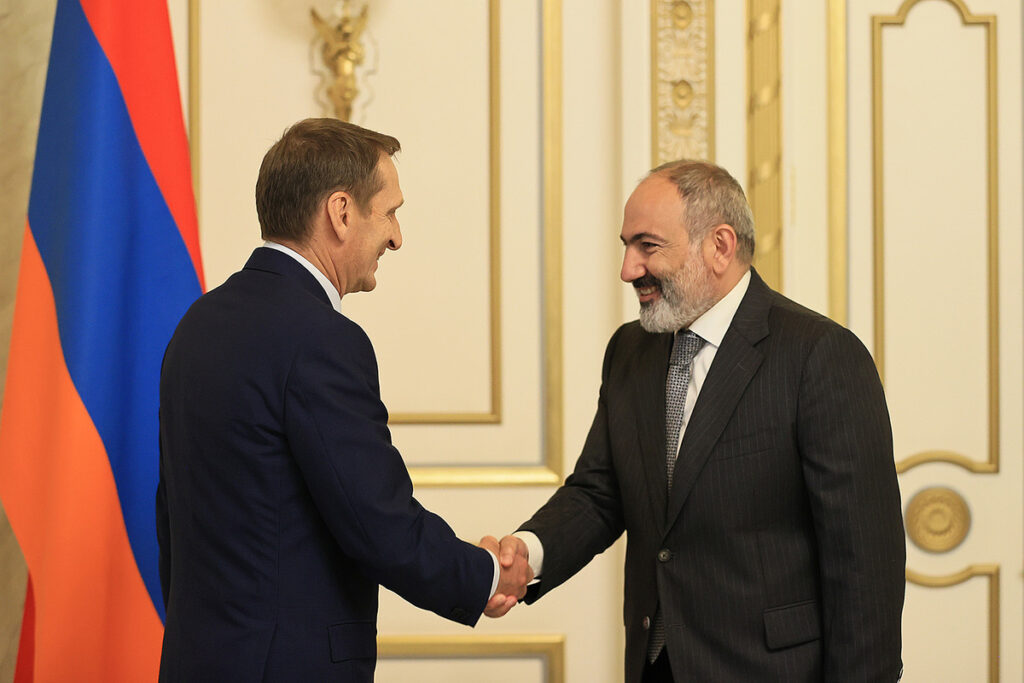

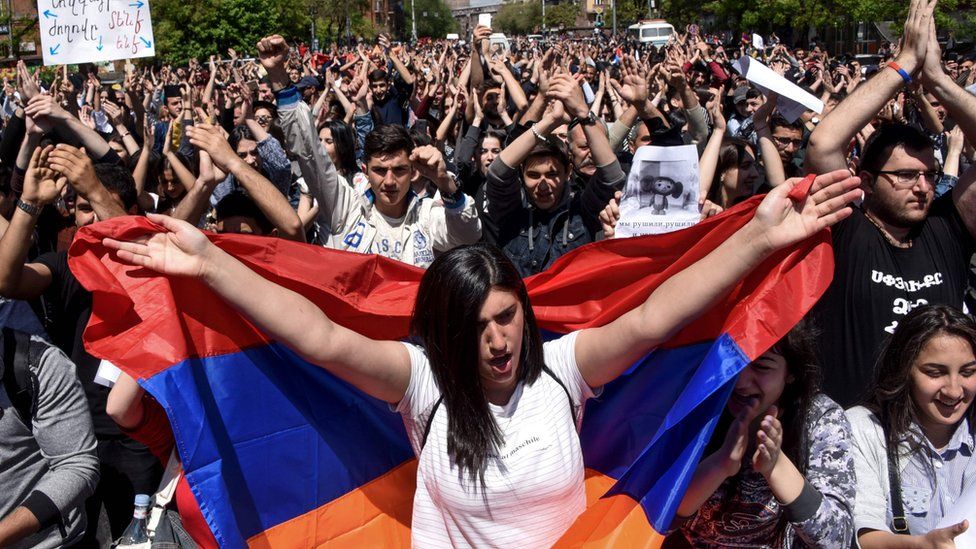
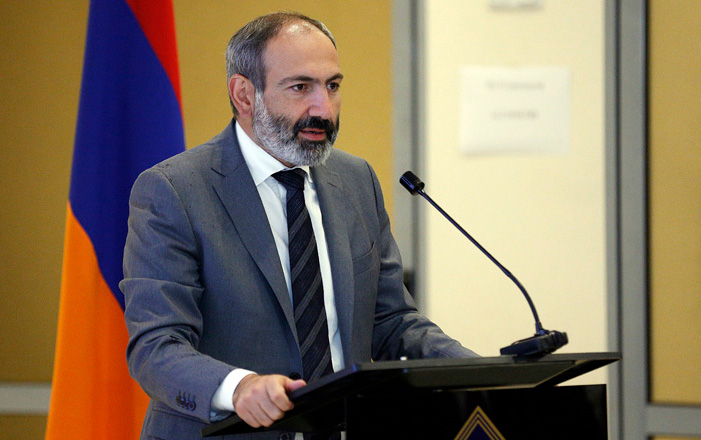
More on this story: The least alternative on the horizon to distance Yerevan from Russia
Long-term statehood consolidation
If successful, the reform will:
- End Armenia’s three-decade dependence on Russian intelligence patronage.
- Rebuild national sovereignty.
- Allow the country to integrate into Western economic and security institutions.
This is a generational transformation.
Summary
Armenia’s move to create a foreign counterintelligence service reflects the most profound shift in its national security policy since independence. The aims are clear:
- Cut Russia’s intelligence hold over the country,
- protect the government from foreign-backed coups,
- build Western-compatible security infrastructure, and
- shield Armenia from hybrid threats by Russia, Iran, Turkey, and Azerbaijan.
The consequences will be severe in the short term—greater confrontation with Russia, internal political turbulence—but strategically, this reform is the cornerstone of Armenia’s geopolitical realignment toward the West.
Timeline of Armenia’s Intelligence Reforms (2018–2025)
From Russian-controlled security architecture to Western-oriented counterintelligence
2018 — The Velvet Revolution and the First Shock to the Security System
- May 2018: Nikol Pashinyan comes to power.
- Attempts to reform the National Security Service (NSS) begin, but Russian influence remains deeply entrenched.
- Moscow’s networks in the army, NSS, clergy, and politics remain untouched.
Significance:
This marks the start of the political will to change Armenia’s security direction but without structural reforms yet.
2019–2020 — Early Attempts at Autonomy
- Pashinyan’s government pushes to reduce corruption inside the NSS.
- Minor purges happen, mostly targeting oligarch-backed officers, not Russian-linked operatives.
- Armenia still depends on Russia for military intelligence and border protection.
Significance:
The NSS becomes slightly more loyal to the government, but Russian oversight remains intact.
2020 — The Second Karabakh War: Intelligence Collapse
- Sept–Nov 2020: Armenia suffers catastrophic intelligence failures:
- Lack of independent ISR capabilities,
- Reliance on Russian military intelligence,
- Failure to detect Turkish drone operations.
- Russia exploits the crisis to deepen its presence:
- Deployment of “peacekeepers,”
- Expansion of GRU and FSB structures.
Significance:
The war proves Armenia needs sovereign intelligence, but Russia tightens its grip instead.
2021 — Increased Russian Penetration
- Russian FSB Border Service increases operational presence in Armenia.
- NSS leadership becomes more Moscow-dependent after the war.
- Early debates begin inside the government about creating parallel intelligence tools.
Significance:
Armenia’s leadership realizes the NSS cannot be reformed without triggering Russian retaliation.
2022 — The Turning Point: Armenia Starts Turning West
- Russian failure to assist Armenia during border clashes with Azerbaijan (September 2022).
- Armenia begins distancing itself from the CSTO.
- Quiet consultations start with France and the U.S. regarding intelligence restructuring.
Significance:
This is the year when Armenia understands Russia will no longer (or cannot) guarantee its security.
2023 — Collapse of Nagorno-Karabakh and the End of Illusions
- The fall of Nagorno-Karabakh exposes:
- Russian “peacekeepers” doing nothing,
- Possible Russian information-sharing with Azerbaijan,
- Armenia’s complete strategic vulnerability.
- Active discussion begins on the need for a Western-compatible counterintelligence branch.
Significance:
The intellectual and political foundation for drastic reform is formed.
Late 2023 — Start of Open Break with Russia
- Armenia refuses to host CSTO drills.
- Pashinyan publicly states Armenia cannot rely on Russia for security.
- Quiet purges inside the NSS increase (focusing on Russian-linked officers).
Significance:
Armenia begins preparing the space for a new intelligence ecosystem.
Early 2024 — First Stage of Architectural Reform
- France establishes an accelerated military partnership with Armenia.
- EU Monitoring Mission expands; intelligence sharing begins.
- Work groups inside the government draft concepts for:
- foreign CI service,
- cyber-intelligence modernization,
- counter-hybrid operations unit.
Significance:
Western partners indirectly help design new intelligence mechanisms.
Late 2024 — Crisis Phase and Russian Hostility
- Russia escalates psychological operations against Pashinyan.
- GRU-linked networks activate radical opposition groups.
- Armenian security circles warn the PM of increasing coup risk.
- Preparatory plans for a foreign CI service are finalized.
Significance:
External and internal threats force Yerevan to accelerate reforms.
February 2025 — The Coup Attempt
- A Russian-supported coalition attempts to overthrow Pashinyan.
- Armenia’s NSS reacts inconsistently, exposing:
- Russian moles,
- compromised officers,
- internal fragmentation.
- Government realizes the NSS cannot be the sole security pillar.
Significance:
The coup attempt becomes the immediate trigger for creating a new CI structure.
March–April 2025 — Decision Phase
- Armenia begins drafting legislation for:
- A Foreign Counterintelligence Service (FCIS) separate from NSS.
- Personnel vetting rules aligned with Western services.
- Intelligence-sharing protocols with France and the U.S.
- First Western advisors arrive for institutional guidance.
Significance:
The reform enters practical implementation.
Mid–2025 — Institutional Breakthrough
- Armenia formally announces intention to create a foreign CI service.
- Recruitment begins from:
- young officers,
- IT/cyber specialists,
- personnel previously marginalized for being “too pro-Western.”
- France and the U.S. agree to assist in training and equipment.
Significance:
The new agency becomes the symbol of Armenia’s geopolitical pivot.
Projected 2025–2026 — Full Operationalization
- FCIS expected to be:
- operational by late 2025,
- fully functional by mid-2026.
- Tasks:
- dismantle Russian networks,
- block Iranian and Turkish influence operations,
- rebuild Armenia’s security sovereignty.
Significance:
Armenia transitions from Russian intelligence dependency to Western-supported resilience.
Armenia is replacing the old, Russian-controlled NSS architecture with a Western-compatible foreign counterintelligence service capable of defending the country from Moscow, Baku, Tehran, and Ankara.
Scenario Matrix: Potential Destabilization Attempts Against Armenia (2025–2026)
Focus: Russian retaliation, regional manipulation, internal radicals, hybrid warfare
SCENARIO 1 — Russian-Backed Hybrid Destabilization
(Most likely · High impact)
Trigger
Creation of Armenia’s foreign counterintelligence service; Western security alignment; cooperation with France and the U.S.
Key Actors:
- Russian GRU, FSB (Center 18, Center 12, Information Operations units)
- Russian-aligned political parties in Armenia
- Radical opposition groups
- Clerical networks linked to the Russian Orthodox Church
Mechanisms:
- Intensified anti-government protests
- Information warfare portraying Pashinyan as “destroying Armenian-Russian friendship”
- Activation of sleeper influence networks in the NSS and military
- Cyberattacks on government servers and energy systems
- Controlled leaks and disinformation campaigns
- Attempts to sabotage Western military supplies
Probability : High (70–80%)
Impact : Severe:
- Can undermine institutional reforms,
- Block intelligence restructuring,
- Increase coup risk.
Early Warning Indicators:
- Surge of coordinated clergy-driven mobilization
- Simultaneous protests in Yerevan, Gyumri, Vanadzor
- GRU-linked narratives trending in Armenian Telegram channels
- Russian military base (Gyumri) troop movements or “exercises”
- Diplomatic language from Moscow switching to direct threats
Countermeasures:
- Fast-track personnel vetting inside NSS
- Western cyber assistance and joint monitoring teams
- Protective intelligence around government leadership
- Rapid-response disinformation detection units
- Legal tools to dismantle foreign-funded front groups
SCENARIO 2 — Coup Attempt 2.0
(Medium likelihood · Very high impact)
Trigger
FCIS dismantles key Russian networks; Kremlin perceives a point of no return.
Key Actors
- Retired military officers with pro-Russian orientation
- Certain NSS factions
- Russian intelligence handlers
- Far-right paramilitary groups or revanchist cells
Mechanisms
- Armed mutiny by a small number of officers
- Seizure of symbolic buildings (Parliament, NSS HQ)
- Calls for “salvation government”
- Attempts to arrest or “neutralize” government leadership
- Russian media declaring the coup a “national rescue initiative”
Probability
Medium (30–40%)
Impact
Extremely severe:
- Could trigger internal conflict,
- Reverse Armenia’s foreign pivot,
- Create a Belarus-style dependency on Russia.
Early Warning Indicators
- Sudden resignations or reshuffling inside NSS or military
- Increased Russian diplomatic traffic to Yerevan
- Clergy openly calling for “national salvation”
- Procurement of weapons by radical groups
- Russian base officers coordinating with dissident Armenian officers
Countermeasures
- Strengthen personal security of key officials
- Pre-emptive arrests of coup-linked actors
- Intelligence liaison with France/US for real-time signals
- Physical control over media and telecoms during crises
- Rapid legal isolation of pro-Russian oligarchs
SCENARIO 3 — Azerbaijani–Turkish Pressure and Internal Manipulation
(Medium likelihood · High impact)
Trigger
Armenia deepens security ties with the West; Ankara and Baku seek leverage to force concessions.
Key Actors:
- Azerbaijani intelligence (Azerbaijan’s State Security Service)
- Turkish MIT
- Azerbaijani lobby groups and NGOs operating in Armenia
- Pro-Turkish economic networks
Mechanisms
- Micro-protests by manipulated minorities (e.g., border villages)
- Tribal/ethnic-mixed-region agitation
- Border provocations or drone incursions
- Covert funding of anti-government actors
- Economic pressure on Armenian exporters
- Information warfare claiming “Western pivot endangers peace”
Probability: Medium (40–50%)
Impact
High:
- Forces Yerevan into defensive posture,
- Distracts from intelligence reform,
- Creates domestic discontent.
Early Warning Indicators
- Spike in cross-border drone flights
- Azerbaijani media focusing on “Armenian weakness”
- NGOs in Armenia receiving funds from Turkish/Azerbaijani channels
- Protests in Syunik framed as “economic” or “security” grievances
Countermeasures
- Increase border ISR capabilities with Western assistance
- Separate economic pressure relief mechanisms
- Public exposure of Azerbaijani/Turkish influence operations
- Reinforcement of border communities with civil defense programs
SCENARIO 4 — Iranian Hybrid Interference
(Low–medium likelihood · Medium impact)
Trigger
Armenia’s growing ties with the U.S. and France are perceived as threatening Iranian influence.
Key Actors
- Iranian MOIS
- IRGC Quds Force networks in southern Armenia
- Pro-Iranian clerical and business networks
- Iranian-backed social-media influence cells
Mechanisms
- Mobilization of Shia communities
- Protests accusing the government of “anti-Iranian” alignment
- Information warfare via pro-Iran media
- Border pressure in Meghri corridor
- Targeted bribery of Armenian officials
Probability
Low–Medium (25–30%)
Impact
Moderate:
- Distracts Armenian intelligence forces,
- Increases anxiety among border populations,
- Creates friction with Western partners.
Early Warning Indicators
- Sudden shifts in Iranian ambassador’s rhetoric
- IRGC-affiliated charity groups expanding operations
- Attempts to recruit Armenians near the Iran border
- New media outlets promoting “traditional values” and anti-Western narratives
Countermeasures
- Monitoring financial flows into religious and cultural institutions
- Strengthening FCIS liaison with Western services on Iran
- Enhanced border surveillance with EU equipment
- Legal oversight of Iranian-linked NGOs and businesses
SCENARIO 5 — Domestic Radicalization and Spontaneous Revolt
(Low likelihood · Medium–High impact)
Trigger
Economic hardship + information warfare + security reforms perceived as “anti-national.”
Key Actors
- Ultra-nationalist groups
- Clerical extremists
- Certain oligarchic factions losing influence
- Disoriented veterans of the 2020 war
Mechanisms
- Riots in Yerevan or Gyumri
- Attacks on government buildings or media outlets
- Arson or sabotage
- Attempts to create “grassroots” destabilization similar to Georgia’s 2024 unrest
Probability
Low (20–25%)
Impact
Medium–High:
- Damages perception of stability,
- Could be exploited by Russia or Azerbaijan,
- Slows reform timelines.
Early Warning Indicators
- Unusual mobilization of “patriotic youth groups”
- Sermons targeting the government
- Spikes in social media radicalization
- Funding to nationalist groups from opaque sources
Countermeasures
- Youth deradicalization programs
- Prosecution of hate speech and organized extremism
- Buffer zones around critical infrastructure
- Predictive analytics for social media mobilization
SCENARIO 6 — Cyber-Sabotage on Critical Infrastructure
(High likelihood · Medium impact)
Trigger
Armenia’s intelligence realignment threatens Russian and regional cyber-intelligence interests.
Key Actors
- Russian FSB Center 18
- Azerbaijan’s electronic warfare units
- Iranian cyber divisions
- Private Russian cyber-mercenary groups
Mechanisms
- Attacks on:
- power grid,
- telecom backbone,
- government databases,
- financial institutions.
- Ransomware operations to paralyze state systems
- Data leaks targeting government legitimacy
Probability
High (60–70%)
Impact
Medium to high depending on target
Potential to freeze reforms for weeks.
Early Warning Indicators
- Reconnaissance scans by known APT groups
- Malware infiltrations inside ministries
- Attacks on smaller banks or telecom operators (test runs)
- Disinformation pushing “government incompetence” narratives
Countermeasures
- Joint CERT-Armenia + EU cyber task force
- Segregation of government networks
- Mandatory cyber hygiene protocols
- Real-time intrusion detection with Western tech
Combined Strategic Assessment
Most likely destabilization vectors:
- Russian Hybrid Pressure + Information Operations
- Cyber-sabotage
- Azerbaijani-Turkish coordinated pressure
Most dangerous destabilization vector:
- A coup attempt supported by Russian GRU-linked actors
(rare but catastrophic)
Most overlooked threat:
- Iranian covert influence in southern Armenia (Meghri/Zangezur corridor).
